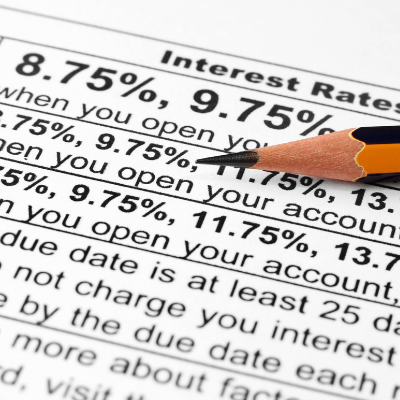
Understanding Interest Rates
- 2.22.2021
- Financial Education
- Frontwave Credit Union
No doubt you’ve heard of interest rates before — for example, in reference to a loan or credit card. But how exactly do interest rates work? And what does an interest rate of, say “2.49% APR,” really mean? We’re here to give you the inside scoop.
Interest Rates Defined
When it comes to a loan, the interest rate is the amount a lender charges you to borrow their funds. It’s expressed as a percentage of the total amount you borrow (called your principal). Interest rates can also be used to refer to the interest you’ll earn on a savings account, certificate of deposit (CD) or investment. They’re expressed as a percentage of the total amount you deposit or invest.
Simple Interest vs. Compound Interest
Simple interest is an easy, straighforward method of calculating interest. With simple interest, you multiply the principal amount by the interest rate by the term. So if you had a $20,000 car loan at a 5% interest rate and a term of 4 years, you could calculate simple interest by taking $20,000 x 0.05 x 4 = $4,000. This means you’d pay $4,000 in interest over the life of the loan, or $24,000 in total.
Compound interest, on the other hand, is a little more complicated. It's calculated periodically (for example, daily, monthly or quarterly) and that amount of interest gets immediately added to your balance. With each period going forward, your account balance gets a little bigger, so the interest paid on the balance gets bigger as well. If you’re talking about a loan, that means you’ll pay more in interest when it’s calculated using the compounding method. If you’re talking about a savings account or investment, it means you’ll earn more in interest.
The best way to know how your lender or financial institution calculates interest? Ask! It can vary from place to place, and even loan type to loan type.
What about APR and APY?
While it's great to understand the difference between simple and compound interest, most interest rates aren’t listed that way. Instead, they're often listed as APRs or APYs. So what exactly does that mean?
APR stands for “Annual Percentage Rate.” It’s typically used in reference to loans or credit cards. It equals the percentage of principal you’ll pay over the full course of a year based on the term of your loan, as well as account amortization and any fees. The easiest way to see exactly what you’ll pay at different APRs and/or for different terms is to use one of our handy financial calculators. (Trust us, the math is not worth doing yourself!)
APY stands Annual Percentage Yield. It refers to the interest rate you’ll earn on a savings account, CD or investment over a year, including the effect of compounding interest. (APR, on the other hand, doesn’t account for compounding interest.)
Want More Financial Knowledge?
Be sure to check out one of our upcoming financial workshops! They’re free and virtual, so you can soak up all that financial knowledge from the comfort of your couch.
